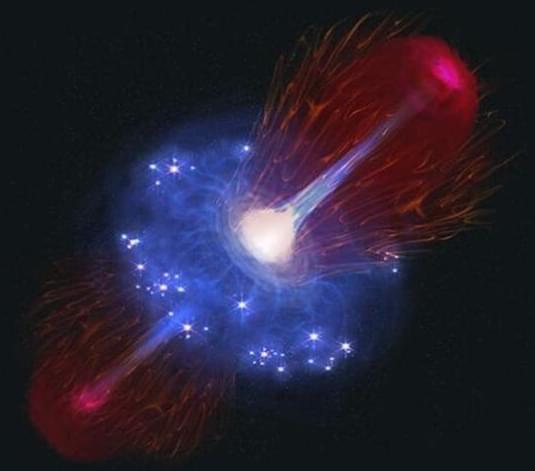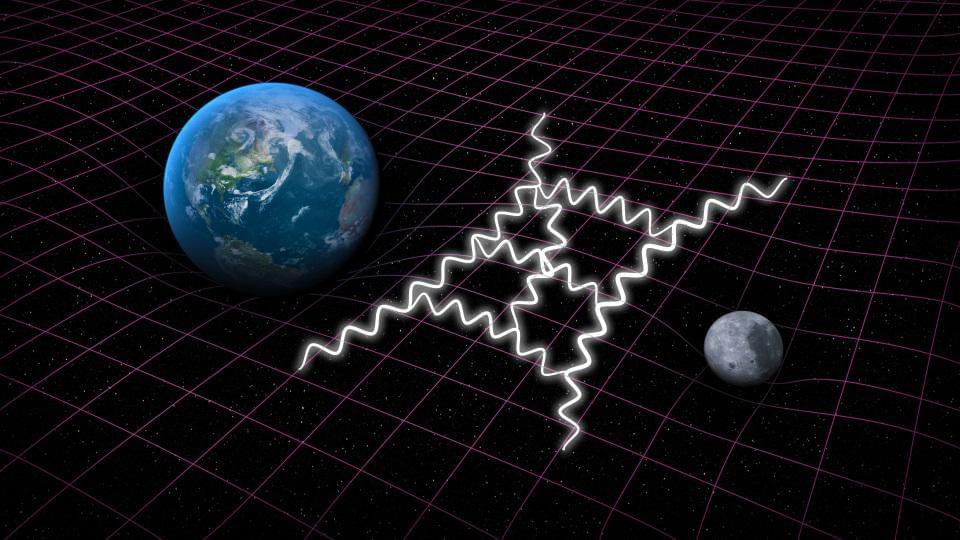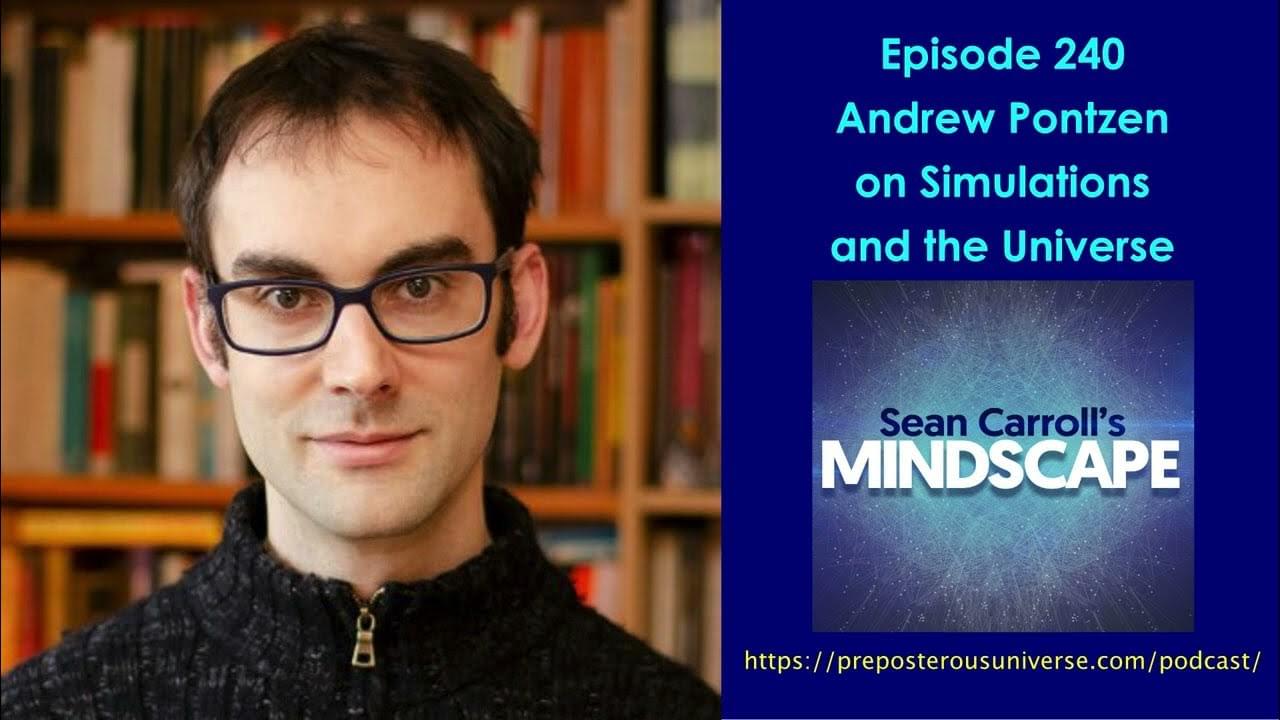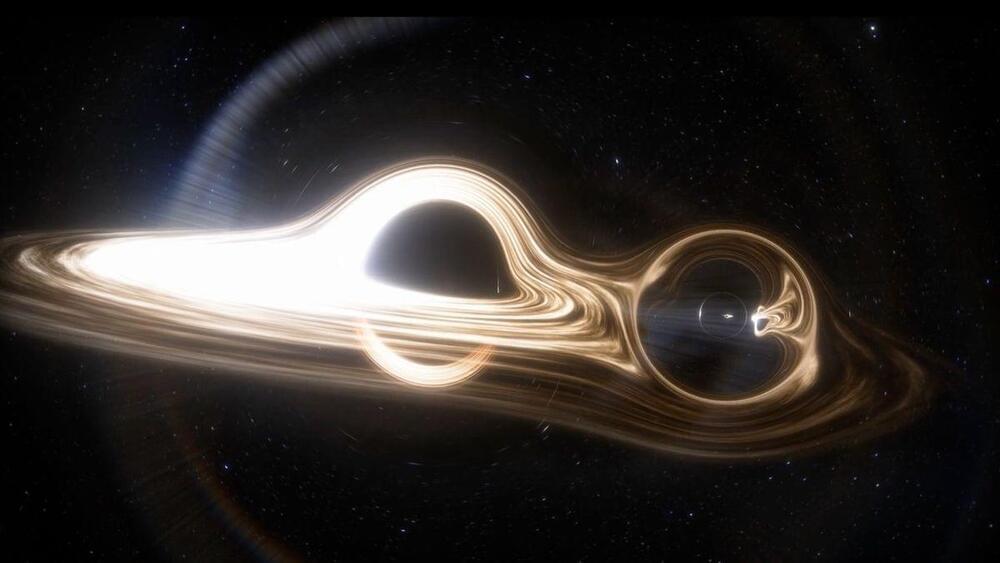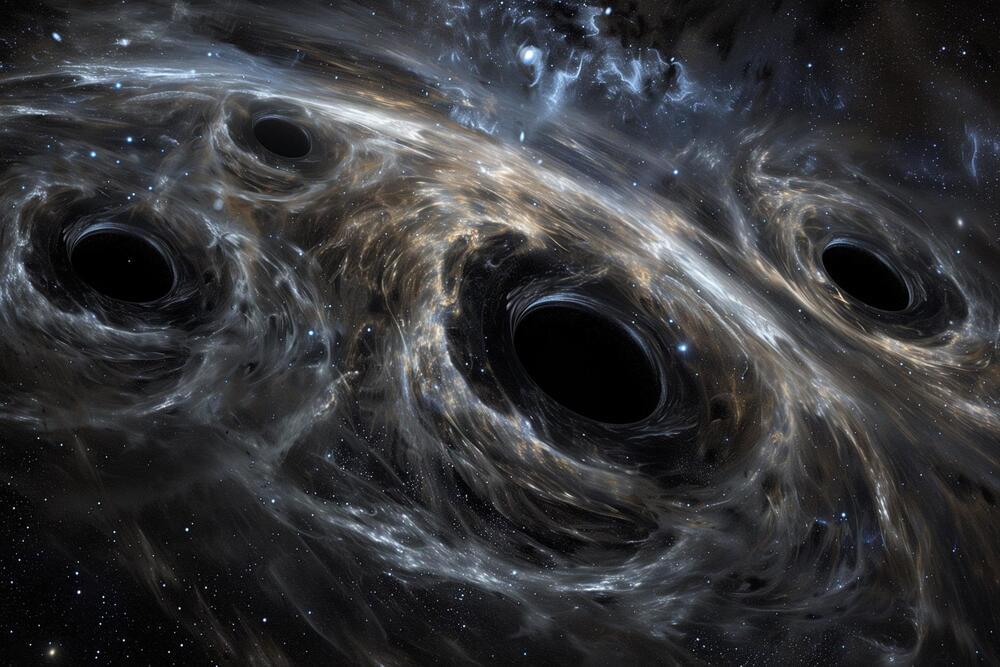Sleeping after eating!
Category: cosmology – Page 47
Which brings us to the big question: what about gravity?
This is something where we can’t be certain, as gravitation remains the only known force for which we don’t have a full quantum description. Instead, we have Einstein’s general relativity as our theory of gravity, which relies on a purely classical (i.e., non-quantum) formalism for describing it. According to Einstein, spacetime behaves as a four-dimensional fabric, and it’s the curvature and evolution of that fabric that determines how matter-and-energy move through it. Similarly it’s the presence and distribution of matter-and-energy that determine the curvature and evolution of spacetime itself: the two notions are linked together in an inextricable way.
Now, over on the quantum side, our other fundamental forces and interactions have both a quantum description for particles and a quantum description for the fields themselves. All calculations performed within all quantum field theories are calculated within spacetime, and while most of the calculations we perform are undertaken with the assumption that the underlying background of spacetime is flat and uncurved, we can also insert more complex spacetime backgrounds where necessary. It was such a calculation, for example, that led Stephen Hawking to predict the emission of the radiation that bears his name from black holes: Hawking radiation. Combining quantum field theory (in that case, for electromagnetism) with the background of curved spacetime inevitably leads to such a prediction.
Patreon: https://www.patreon.com/seanmcarroll.
Blog post with audio player, show notes, and transcript: https://www.preposterousuniverse.com/podcast/2023/06/19/240-…-universe/
It’s somewhat amazing that cosmology, the study of the universe as a whole, can make any progress at all. But it has, especially so in recent decades. Partly that’s because nature has been kind to us in some ways: the universe is quite a simple place on large scales and at early times. Another reason is a leap forward in the data we have collected, and in the growing use of a powerful tool: computer simulations. I talk with cosmologist Andrew Pontzen on what we know about the universe, and how simulations have helped us figure it out. We also touch on hot topics in cosmology (early galaxies discovered by JWST) as well as philosophical issues (are simulations data or theory?).
Andrew Pontzen received his Ph.D. in astronomy from the University of Cambridge. He is currently Professor of Cosmology at University College London. In addition to his research in cosmology, he frequently writes popular articles and appears in science documentaries. His new book is The Universe in a Box: Simulations and the Quest to Code the Cosmos.
Mindscape Podcast playlist: https://www.youtube.com/playlist?list=PLrxfgDEc2NxY_fRExpDXr87tzRbPCaA5x.
Sean Carroll channel: https://www.youtube.com/c/seancarroll.
#podcast #ideas #science #philosophy #culture
Almost 300 binary mergers have been detected so far, indicated by their passing gravitational waves. These measurements from the world’s gravitational wave observatories put constraints on the masses and spins of the merging objects such as black holes and neutron stars, and in turn this information is being used to better understand the evolution of massive stars.
Thus far, these models predict a paucity of black hole binary pairs where each black hole has around 10 to 15 times the mass of the sun. This “dip or mass gap” in the mass range where black holes seldom form depends on assumptions made in the models; in particular, the ratio of the two masses in the binary.
Now a new study of the distribution of the masses of existing black holes in binaries finds no evidence for such a dip as gleaned from the gravitational waves that have been detected to date. The work is published in The Astrophysical Journal.
Astronomers have discovered a massive dormant black hole from the early universe, just 800 million years after the Big Bang, using the James Webb Space Telescope.
This black hole, with a mass 400 million times that of our Sun, challenges existing models of black hole growth due to its size and low accretion rate.
Unprecedented black hole size and behavior.
One of the biggest mysteries in science—dark energy—doesn’t actually exist, according to researchers looking to solve the riddle of how the universe is expanding.
Their analysis has been published in the journal Monthly Notices of the Royal Astronomical Society Letters.
For the past 100 years, physicists have generally assumed that the cosmos is growing equally in all directions. They employed the concept of dark energy as a placeholder to explain unknown physics they couldn’t understand, but the contentious theory has always had its problems.
While investigating a mysterious radiation signal unlike any seen before, astronomers may have uncovered a rare pair of binary supermassive black holes with a truly monstrous appetite.
Patreon: https://www.patreon.com/seanmcarroll.
Blog post with audio player, show notes, and transcript: https://www.preposterousuniverse.com/podcast/2024/03/04/267-…f-reality/
In the 1860s, James Clerk Maxwell argued that light was a wave of electric and magnetic fields. But it took over four decades for physicists to put together the theory of special relativity, which correctly describes the symmetries underlying Maxwell’s theory. The delay came in part from the difficulty in accepting that light was a wave, but not a wave in any underlying “aether.” Today our most basic view of fundamental physics is found in quantum field theory, which posits that everything around us is a quantum version of a relativistic wave. I talk with physicist Matt Strassler about how we go from these interesting-but-intimidating concepts to the everyday world of tables, chairs, and ourselves.
Matt Strassler received his Ph.D. in physics from Stanford University. He is currently a writer and a visiting researcher in physics at Harvard University. His research has ranged over a number of topics in theoretical high-energy physics, from the phenomenology of dark matter and the Higgs boson to dualities in gauge theory and string theory. He blogs at Of Particular Significance, and his new book is Waves in an Impossible Sea: How Everyday Life Emerges from the Cosmic Ocean.
Mindscape Podcast playlist: https://www.youtube.com/playlist?list=PLrxfgDEc2NxY_fRExpDXr87tzRbPCaA5x.
Sean Carroll channel: https://www.youtube.com/c/seancarroll.
#podcast #ideas #science #philosophy #culture
Has the decades-long mystery behind the strange star movements in Omega Centauri, the Milky Ways largest star cluster, finally been solved?
Omega Centauri has been studied to determine if its high star velocities are caused by an intermediate mass black hole or multiple smaller black holes. Recent data from pulsar accelerations suggest the latter, advancing our understanding of black hole formation.
Omega Centauri’s Mysteries
Ancient cultures long thought the Sun had a mind of it’s own, but could life form in stars by nature or exist by artificial origins, and what would star with a mind of its own be like?
Get a free month of Curiosity Stream: http://curiositystream.com/isaacarthur.
Join this channel to get access to perks:
/ @isaacarthursfia.
Visit our Website: http://www.isaacarthur.net.
Join Nebula: https://go.nebula.tv/isaacarthur.
Support us on Patreon: / isaacarthur.
Support us on Subscribestar: https://www.subscribestar.com/isaac-a…
Facebook Group: / 1583992725237264
Reddit: / isaacarthur.
Twitter: / isaac_a_arthur on Twitter and RT our future content.
SFIA Discord Server: / discord.
Credits:
Conscious Stellar Objects.
Episode 238a, Season 6E20a.
Written, produced, and narrated by: isaac arthur.
Editors.
Andy Nelson.
S. Kopperud.
Graphics by.
